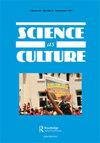遗传矩阵:遗传学和对墨西哥梅斯蒂扎伊人、健康和归属感的理解
IF 2.4
3区 哲学
Q1 CULTURAL STUDIES
引用次数: 0
摘要
从来自不同地区和背景的墨西哥本科生的小组讨论中收集的经验数据表明,学生倾向于以细致、详细和非简单化的方式将遗传学信息纳入与家族相似性、健康和梅斯蒂扎伊(种族混合)问题相关的遗传代际传递的描述中。地域和文化差异可以定义理解遗传传递的方式,这排除了遗传学如何有助于定义群体或个人特征的任何概括。在学生们的描述中,基因的作用似乎是稳定的,但不是决定性的,在处理与混血等身份相关的概念时,他们往往会把基因和种族放在一边。学生们认为基因只是影响他们健康、身份、家族相似性和血统的众多因素之一。他们将自己理解为与他们的亲属,他们的社区,以及他们所在的地方有着遗传上的联系,这就是我们所说的归属感的近似维度。这与他们如何用与种族、地区或国家有关的遥远的、更抽象的财产来描绘自己形成鲜明对比。这种遗传叙事的双重框架是关于遗传和归属的一系列相互联系的思想的主要特征,这可以通过遗传矩阵的概念来阐明。这补充了STS之前对社会遗传学和公众科学理解研究的贡献。本文章由计算机程序翻译,如有差异,请以英文原文为准。
The Heredity Matrix: Genetics and the Understanding of Mestizaje, Health, and Belonging in Mexico
ABSTRACT Empirical data gathered from group discussions with Mexican undergraduate students from different regions and backgrounds showed that students tend to incorporate information about genetics into their accounts of hereditary intergenerational transmission linked to issues of family resemblance, health, and mestizaje (racial admixture) in a nuanced, elaborated, and non-simplistic manner. Locality and cultural variations can define the ways hereditary transmission is understood, which precludes any generalization about how genetics contributes to defining group or personal features. In the students’ accounts, gene action appears as stable but not deterministic, and they tend to sideline genetics and race, when dealing with identity-linked notions like mestizo. Genes were considered by students to be only one influence among many that affect their health, identity, family resemblance and ancestry. They understood themselves as hereditarily linked to their relatives, their communities, and their localities in what we call the proximate dimension of belonging. This contrasted with how they portrayed themselves in distant, more abstract belongings pertaining to ethnic, regional, or national ascriptions. This dual framing of genetic narratives was a main feature of a connected set of ideas about heredity and belonging, which can be elucidated through the concept of heredity matrix. This complements previous STS contributions to the research on Genetics in Society and Public Understanding of Science.
求助全文
通过发布文献求助,成功后即可免费获取论文全文。
去求助
来源期刊

Science As Culture
Multiple-
CiteScore
5.20
自引率
3.80%
发文量
28
期刊介绍:
Our culture is a scientific one, defining what is natural and what is rational. Its values can be seen in what are sought out as facts and made as artefacts, what are designed as processes and products, and what are forged as weapons and filmed as wonders. In our daily experience, power is exercised through expertise, e.g. in science, technology and medicine. Science as Culture explores how all these shape the values which contend for influence over the wider society. Science mediates our cultural experience. It increasingly defines what it is to be a person, through genetics, medicine and information technology. Its values get embodied and naturalized in concepts, techniques, research priorities, gadgets and advertising. Many films, artworks and novels express popular concerns about these developments. In a society where icons of progress are drawn from science, technology and medicine, they are either celebrated or demonised. Often their progress is feared as ’unnatural’, while their critics are labelled ’irrational’. Public concerns are rebuffed by ostensibly value-neutral experts and positivist polemics. Yet the culture of science is open to study like any other culture. Cultural studies analyses the role of expertise throughout society. Many journals address the history, philosophy and social studies of science, its popularisation, and the public understanding of society.
 求助内容:
求助内容: 应助结果提醒方式:
应助结果提醒方式:


